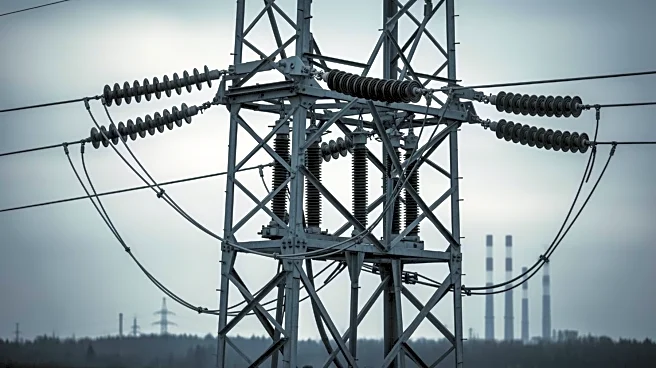What's Happening?
The U.S. electric grid is facing significant challenges due to supply chain delays and rising equipment costs. Key components such as transformers, circuit breakers, and high-voltage cables are experiencing
lengthy production times, with lead times extending up to four years for large power transformers. This situation is exacerbated by increased electricity demand from electrification efforts and data center growth. The Biden administration has attempted to address these issues by delaying transformer efficiency requirements and providing financial support to domestic manufacturers, but these measures have not fully resolved the bottlenecks.
Why It's Important?
The delays and cost increases in grid equipment pose a threat to the reliability and expansion of the U.S. power grid. As demand for electricity continues to rise, the inability to quickly replace aging infrastructure could lead to increased costs and potential power shortages. This situation highlights the need for strategic investments in domestic manufacturing and supply chain resilience to ensure the grid can meet future demands. Utilities and industry groups are exploring alternative solutions, such as modular substations, but these are medium-term fixes that do not address the immediate challenges.
What's Next?
To mitigate these challenges, large government incentives, including grants and loans, could be necessary to expand domestic production of critical grid components. Utilities may also need to adopt innovative solutions like battery storage and demand management to maintain grid reliability. The ongoing supply chain issues underscore the importance of developing a more resilient and self-sufficient infrastructure to support the nation's energy needs.












